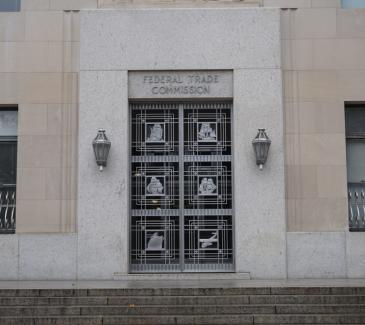Security | Threat Detection | Cyberattacks | DevSecOps | Compliance
Egress
Crypto and phishing - how criminals are cashing in
Over the past several years, crypto has become increasingly mainstream. Research has predicted that by the end of 2022, the number of US adults who own at least one cryptocurrency will increase by 19% to 33.7 million. This equates to 12.8% of the population. Naturally, cybercriminals have quickly learned how to cash in on this popularity.
The FTC are cracking down on illegal data sharing
There’s a glimmer of good news amid the ever-evolving IT threat landscape – although it’s come about as a result of worrying illegal activity. Even though recent changes to data privacy laws have placed consumers in control of their personal information, the Federal Trade Commission (FTC) has found that some apps are, in fact, collecting data they don’t need.
Watch out for this zip file scam
Distributing malware through a. ZIP file isn’t anything new, so threat actors are using a new tactic in response to tightening cybersecurity measures across the globe. While most people know not to open an unexpected attachment, these malicious files are starting to pop up in email threads with trusted friends and colleagues — this makes them very easy to fall for.
Is deliberate exfiltration or human error the bigger outbound threat?
Outbound threats cause a continuous headache for IT professionals. There’s so much variety in type and risk level, and prioritizing what to be most concerned about is a challenge. Plus, risks have ramped up in recent years due to the rise in home working, flexible working, and BYOD, making the landscape more complex. It’s easy to be concerned about whether you have the right tools in place to deal with the multitude of cybersecurity risks out there.
How can we turn a hacker's toolkit against them?
Hackers use many tools at each stage of an attack. These tools are often readily available online, both free of charge and to buy, and easy to use for non-technical cybercriminals. Understanding a hacker’s tools and tactics is essential for cyber security practitioners and vendors aiming to build effective defenses and stay one step ahead of a quickly evolving host of cyber threats.
Can outbound data loss be worse than inbound attacks?
We talk extensively about the impact of inbound cybersecurity attacks and the devastation they can cause, but what about outbound data loss? According to an IBM study, human error is the leading cause of 95% of cybersecurity breaches. That means 19 in 20 breaches could be avoided entirely if not for a person introducing risk either through human error, deliberately breaking security protocol, or malicious behavior.
Egress named as a representative vendor in the Gartner Market Guide for Data Loss Prevention (DLP)
Industry analyst Gartner recently published their 2022 report on the state of the DLP market. They consider DLP a mature technology but do talk to the emergence of next generation data security tools for insider risk management and cloud use cases. The enterprise DLP (EDLP) market is growing at around 6.6%.
What should a CISO's priorities be for reducing inbound and outbound email risk in M365?
While cybersecurity risks are similar across the board for any IT leader, it's down to each CISO to decide what takes priority. Before doing that, they need to assess the risks and plan accordingly for them. Unfortunately, many businesses don't do this. A 2022 UpCity study – the Small Business Cybersecurity Survey Investigations Report – found that only 50% of SMBs have a cybersecurity plan.
How should the security industry innovate against email risks over the next five years?
Our research has revealed that 80% of security professionals have experienced increased security threats since shifting to remote work. To stay protected against attacks and reduce the chances of losing significant amounts of money, putting their users at risk, or destroying their reputation, organizations must do more to innovate against email risks. In our most recent report, Cybersecurity experts' views on email risk within Microsoft 365, we identify many of the risks Microsoft 365 users face.











